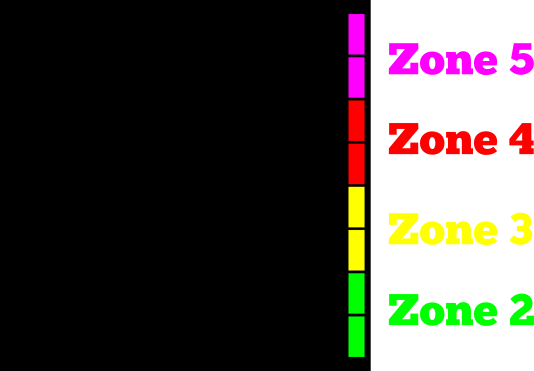-
• #2
Is it worth putting any effort into this before HRM is better?
Well, if you have a bluetooth ECG it can effectively replace the Bangle's built-in HRM (at least as far as your app is concerned). So you can always develop with that if you have problems with the Bangle's HRM and then later when it gets better you can use that.
... but generally all light-based heart rate monitors do struggle if you're moving your arm around a lot - so if you're doing serious exercise an ECG is probably the way to go anyway, regardless of if you're using a Bangle or not
Should all this live in the bangle app, or some of it live in e.g. Gadgetbridge?
Personally, I think if you can do it all in the Bangle, that'd be better. It'd then work for iOS users - and sometimes it's nice not to have to take your phone with you.
-
• #3
To answer the question in this thread,
Yes, I've seen these 2 apps. I can't use them at the same time as the Run app, and therefore I went for the "Heart rate alarm" app, which kind of partially did the job. I can set a lower and higher limit and it buzzes when limits are reached, and because it's a widget I could use the run app at the same time.
But it's not convenient at all: I can't setup intervals for, say, 5 minutes fast run, 2 minutes walk, or anything else. Also, I can't stop the "Heart rate alarm" app for a short walk, without stopping the Run app first.- IMO, before having a personnal trainer app, we need a runners coach app. Meaning, before having the watch decide of a set of running sessions (which will be different, like recovery: slow even pace in zone2, many different types of intervals, HIIT sessions, etc...), we need the watch to be able to offer specific kinds of runs and to give feedbacks (faster, slower, recover, half distance, you finished).
Maybe a fork of the run app with an extra screen we can swipe to could be an option.
I think a slider showing where in the heart rate zones you are any moment is what I'd love to see. I actually made a basic design of it half a year ago. And a distance gauge could be a great feedback too.
I use an ECG btw.
2 Attachments
- IMO, before having a personnal trainer app, we need a runners coach app. Meaning, before having the watch decide of a set of running sessions (which will be different, like recovery: slow even pace in zone2, many different types of intervals, HIIT sessions, etc...), we need the watch to be able to offer specific kinds of runs and to give feedbacks (faster, slower, recover, half distance, you finished).
-
• #4
@Gordon Thanks for the input!
@Fteacher
Thanks for elaborating! :)Maybe a fork of the run app with an extra screen we can swipe to could be an option.
Maybe we open a fork of it on one of our own repositories to develop together and do PRs to that and when we want to add it to the official app loader we either suggest to merge into the Run app or a new app?
-
• #5
Disappointingly, I don't code at all @Ganblejs .
I may test run the app and offer suggestions and feedbacks. I think Gordon will want to keep the run app as is, simple and efficient, but will welcome a fork with advanced possibilities.
There are a few things ahead of us. Defining heart rate zones (I spoke about it here) .
Then organising a way to easily setup different runs. -
• #6
Ah, I see! Ideas, mockups and testing are certainly helpful anyways! You wouldn't by chance also be a scientific-papers-finding demon? 😉 If we could find one we like that's easy to just convert to an app I think that could speed up getting to a good place by quite much. Preferably one that's pretty step-by-step and specific about an implementation...
-
• #7
I'm into scientific papers because I'm into a master's degree to become elearning project manager, but because I study, I have really little time for looking for docs for anything else :/ !
-
• #8
Added a bunch of papers that could be of interest in the opening post.
 Gordon
Gordon Fteacher
Fteacher

 Ganblejs
Ganblejs
This thread will be used to collect resources for and hopefully discuss development of a future app for generative workout planning based on physiological indicators such as sleep, previous workouts, etc.
As mentioned here.
One implementation tested here on the Running Channel on youtube:
Papers for inspiration:
Ferreira A, Coelho J, Nogueira N. Wearables with Heart Rate Monitors and
Dynamic Workout Plans. 2018
Toon De Pessemier and Luc Martens. Heart rate monitoring, activity
recognition, and recommendation for e-coaching. Multimedia Tools and
Applications, Jan 2018.
Andrew A. Flatt and Michael R Esco. Evaluating individual training
adaptation with smartphone-derived heart rate variability in a collegiate
female soccer team. The Journal of Strength and Conditioning Research,
30(2):378–385, February 2016.
Gabriele Bleser, Daniel Steffen, Attila Reiss, Markus Weber, Gustaf
Hendeby, and Laetitia Fradet. Personalized Physical Activity Monitoring
Using Wearable Sensors, pages 99–124. Springer International Publish-
ing, Cham, 2015. (Preceding thesis here)
Steven Vos, Carine Lallemand, Aarnout Brombacher, Jos Goudsmit, Mark Janssen & Coen Lauwerijssen 2020, ‘How Do Runners Experience Personalization of Their Training Scheme: The Inspirun E-Coach?’, Sensors, vol. 20, no. 16,
Guo X, Liu J, Chen Y. When your wearables become your fitness mate. Smart Health. 2020;16.
Guo, Xiaonan, Jian Liu and Yingying Chen. “FitCoach: Virtual fitness coach empowered by wearable mobile devices.” IEEE INFOCOM 2017 - IEEE Conference on Computer Communications (2017): 1-9.
Aliverti A, Evangelisti M, Angelucci A. Wearable Tech for Long-Distance Runners. Springer Berlin Heidelberg; 2022.
Things to consider:
I will be adding to this opening comment.